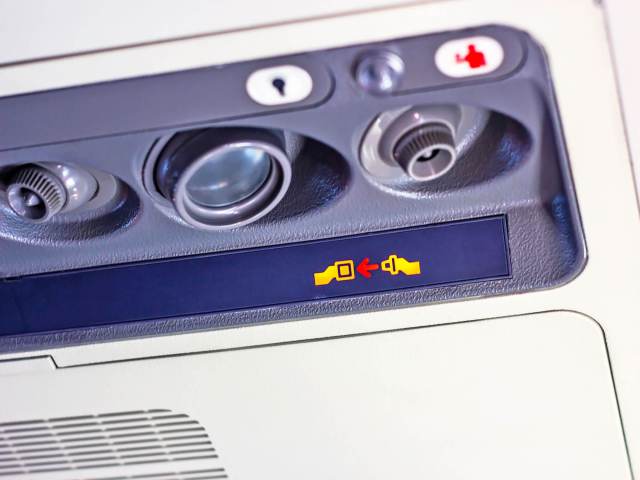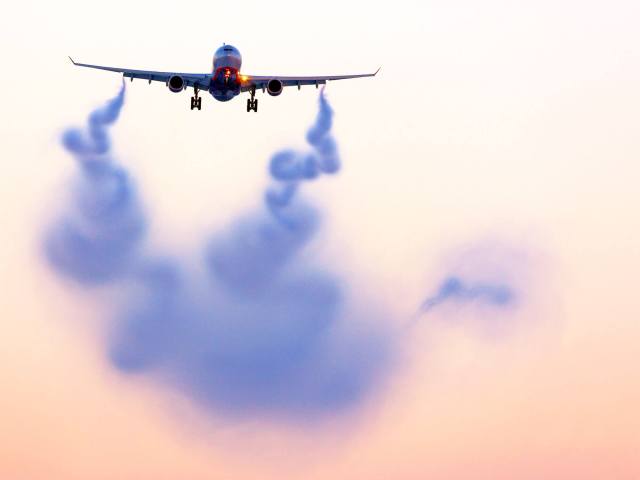If you fly a lot, chances are that you’re no stranger to turbulence. It’s not rare for the fasten-seatbelt light to be switched on midway through a flight, nor is it uncommon for passengers to experience short periods of bumpiness. Even though it can be unpleasant, turbulence is usually mild and rarely anything to worry about. But if you travel often and have been noticing more frequent bumps in the sky, you’re not alone: According to recent reports, flight turbulence is on the rise. Let’s explain why.
What Happens When a Plane Encounters Turbulence?

The degree of in-flight turbulence can differ significantly from flight to flight. You might experience a brief interruption to the meal service or the inconvenience of not being able to use the restroom for a few minutes. In more extreme cases, the overhead bins can open and shed their contents and injuries can occur, particularly to those who aren’t wearing their seatbelts. That said, unless you’re a nervous flier, it’s not usually something that would trouble you for long.
It’s not just passengers and flight crews that are affected — severe turbulence also causes a headache for aircraft maintenance teams. If a plane bounces around frequently, it’s subjected to greater stresses than when a flight is smooth, causing more wear and tear to the airframe. The need to carry out time-consuming checks and repairs places an additional financial burden on airlines. It’s estimated that turbulence costs the U.S. aviation industry somewhere between $150 and $500 million every year.
One Type of Turbulence Is Becoming More Common

Serious or sustained turbulence is never a good thing, so to learn that its incidence is increasing is unwelcome news. According to a 2023 study carried out by the University of Reading in the U.K., one particular kind of turbulence known as clear air turbulence is becoming far more likely to impact flights than in previous years.
Clear air turbulence is caused when different air masses collide, each with varying wind speeds and directions. In the findings, published in the Geophysical Research Letters journal, datasets taken between 1979 and 2020 demonstrated large increases in clear air turbulence of all magnitudes. Particularly worrisome is that incidences of severe turbulence grew by 55%.
Other Forms of Turbulence

Turbulence is often associated with mountainous regions. As warm air rises to pass over the obstacle, in this case a mountain, it creates unstable air on the windward side. The air cools and condenses, forming clouds and causing turbulence. Frontal turbulence, which is associated with clouds and thunderstorms, occurs in much the same way, minus the hilly terrain. Thanks to the tell-tale presence of those clouds, these types of turbulence are relatively easy to predict, giving pilots time to plan evasive action.
Likewise, wind shear turbulence is something flight crews know to watch out for. This happens when the wind direction and speed change suddenly. Near the jet stream, it’s quite common to encounter this type of turbulence, which is carefully monitored by meteorologists and included in weather reports.
What’s Different About Clear Air Turbulence?

In contrast, clear air turbulence most often happens in cloudless skies. Though it is far more common in winter than summer, this type of turbulence is far trickier for pilots to anticipate, as it isn’t something that can clearly be identified on the plane’s radar. Researchers also found evidence of greater incidences of clear air turbulence at altitudes over 15,000 feet — precisely the kind of altitude commercial aircraft typically favor when cruising.
As a consequence, the data showed that planes following flight paths over the U.S. and the North Atlantic Ocean were especially likely to encounter clear air turbulence. While it’s usually possible to escape such turbulence by altering the plane’s altitude by a few thousand feet, it’s still preferable not to encounter it at all.
What’s Driving This Change?

The authors of the report believe there’s a link between increased turbulence and climate change. One of them, Professor Paul Williams, an atmospheric scientist at the University of Reading, wrote: “Following a decade of research showing that climate change will increase clear air turbulence in the future, we now have evidence suggesting that the increase has already begun. We should be investing in improved turbulence forecasting and detection systems, to prevent the rougher air from translating into bumpier flights in the coming decades.”
Another study at the University of Reading focused on future trends. Isabel Smith, a meteorologist and PhD student, found a correlation between global temperature increases and the incidence of clear air turbulence. According to her projections, by 2050, summers could become more turbulent — matching levels that, in 1950, were seen only in winter and fall.
Even as the world grapples with the need to reduce emissions and invests heavily in green energy and technology, we’re likely to see a continued growth in clear air turbulence. In the meantime, the best advice is to buckle up and always follow flight crew instructions to ensure you remain safe in the skies.
More from our network
Daily Passport is part of Optimism, which publishes content that uplifts, informs, and inspires.























